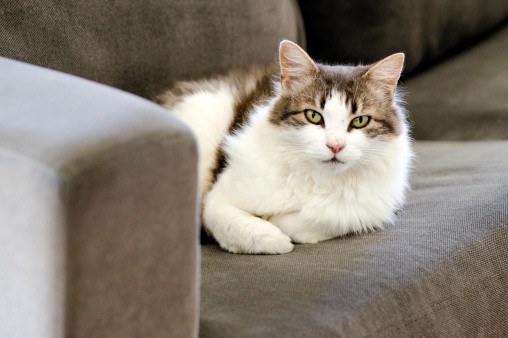
Do you need to know how to give your cat a bath? First, do they really it? Most cats don’t need to be regularly bathed. Those hairballs you discover around your apartment, while annoying, show that your cat is regularly bathing and cleaning themself. Cats famously (and maybe stereotypically) hate water, but sometimes their fur needs some extra TLC.
They may need just a spot cleaning after being outside, or they might need a full-body deep clean. Here’s what you need to know about bathing your cat—and how to do it in a way that leaves you both unscathed.
Do Cats Need Baths?
Cats are natural groomers—your fastidious feline prefers to clean themselves throughout the day using their tongue. But that technique doesn’t always fully clean your cat. There are lots of reasons why cats may need some extra cleaning help from time to time:
- Your cat has fleas or ticks embedded in their fur. Lots of small bugs like fleas, lice, and ticks can latch onto your pet’s fur when they’re outside. This can cause skin irritation or even infections. Baths can help wash away those bugs trapped in the fur, and give you an opportunity to check their skin for bugs that have latched on. If you cannot get all of the bugs off on your own using special medicated, you may need to visit a vet.
- You have a short-hair cat breed. Cats with long hair are able to keep their fur clean and skin oils in-check. But short-haired cats or hairless cats like the Sphynx often have more skin issues and excessive body oils that don’t get distributed by hair. If your cat has shorter hair, you may have to bathe them regularly.
- Your cat has medical issues. Cats who are elderly, obese, or have mobility issues like arthritis may struggle to bathe themselves. This can lead to matted fur, and flaky and delicate skin.

Get Your Cat Bath Supplies Ready
Make sure all of your bath supplies are within easy reach before you start bathing your cat. This can be a stressful experience for your pet, so getting them in and out as fast as possible will make the experience easier. Your supplies should include:
- A bathtub. Make sure the water is warm and not filled to the brim—a full tub of water will stress out your cat even more. You can also use a large bucket or sink in a pinch or if you have a small kitten.
- Pet hair drain plug. If you have a long-haired cat, you need to use a drain plug to keep their hair from clogging up your plumbing.
- Unscented pet shampoo and conditioner. Do not use human shampoo and conditioner. They are not made for cat hair and can irritate their skin because of the different pH levels.
- A microfiber towel. Hair dryer’s loud noises can give your cat anxiety if they haven’t grown up using them. Microfiber towels dry your cat off faster and can be more soothing.
- Hairbrush. Use a wide-toothed comb to get all of your cat’s tangles out of their fur. A lot of brushes on the market easily distribute their oils throughout their coat to make their fur shiny.
- Cotton balls. Your cat can have uncomfortable wax and debris buildup inside their ear canals. Gently clean out their ears using cotton balls (not Q-tips) and be careful not to go too far inside the ear canal.
- Your cat’s favorite treats. If they’re fighting to get out of the tub, try offering them treats or other calming substances like catnip to distract them.
- A partner. You might need an extra person to hold down your cat if they’re biting and scratching you a lot.

How to Give Your Cat A Bath
The younger you start bathing your cat, the more they’re able to get used to the process. Once you have all your supplies set up, lather your cat shampoo and start working from their head to tail. Try to avoid your cat’s face, ears, and eyes. Gently wash their skin and fur using small, gentle circles. Check their skin for any fleas, injuries, or other issues. Once you wash them with shampoo and conditioner, rinse them thoroughly with warm water to make sure any soap residue has been removed.
If you don’t feel comfortable giving your cat a bath, or if they have more anxiety about the process than you think is normal, consider taking your cat to a professional groomer. They can be on the pricey side, but keeping your cat calm and mentally healthy during this stressful process can make the cost worth it. Once the bath is done and they’re safe and sound at home, don’t forget to shower them with love and treats!
The Catington Post is reader-supported. That means, if you make a purchase through links on our site, we may earn an affiliate commission. All images and names which are not the property of The Catington Post are the property of their respective owners.About the author: Natasha Ramirez is an avid writer, storyteller, and dog-lover. Her work has carried her from the bustle of New York at Inc. Magazine to the Santa Fe deserts at Outside Magazine. She enjoys writing about family-focused and community-centered stories.








